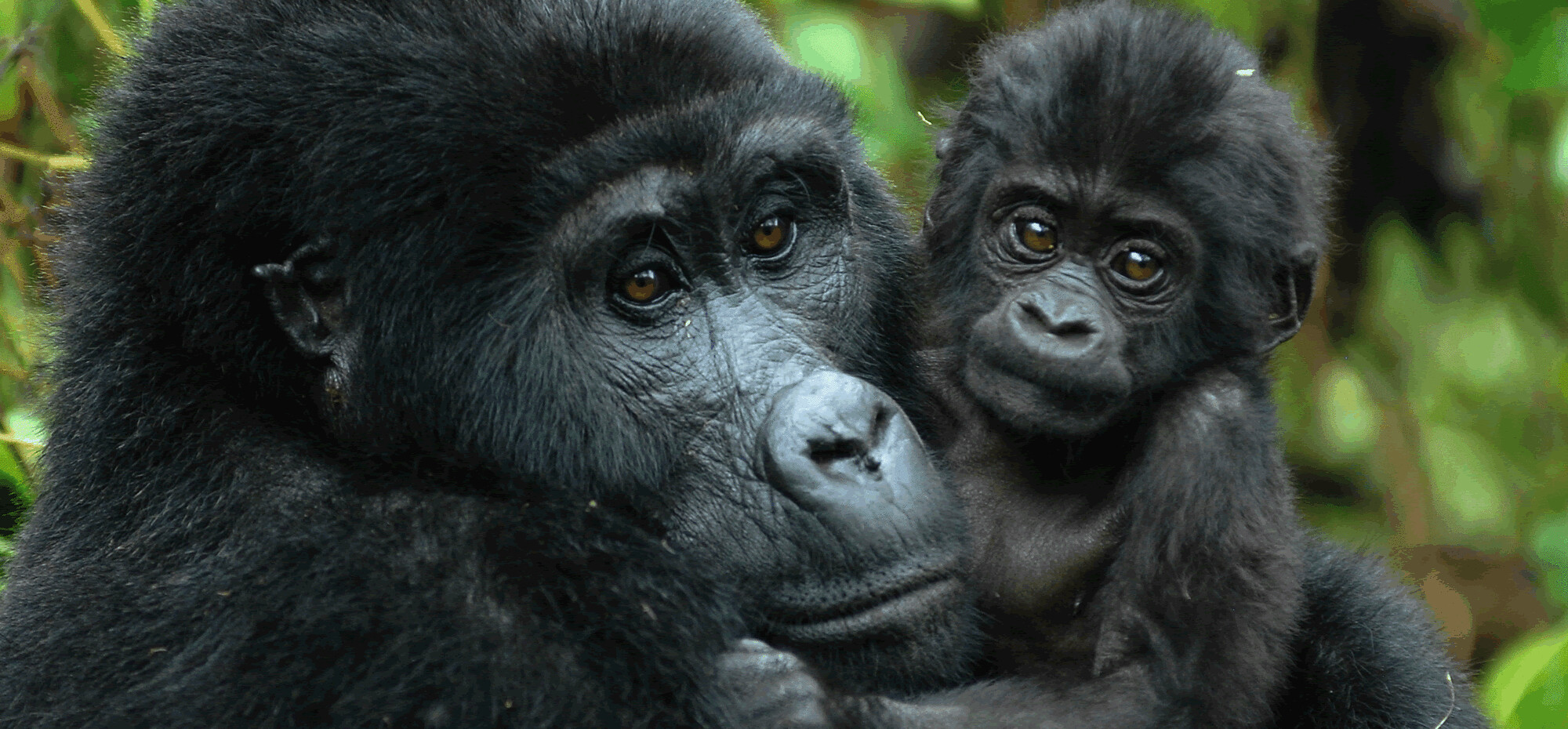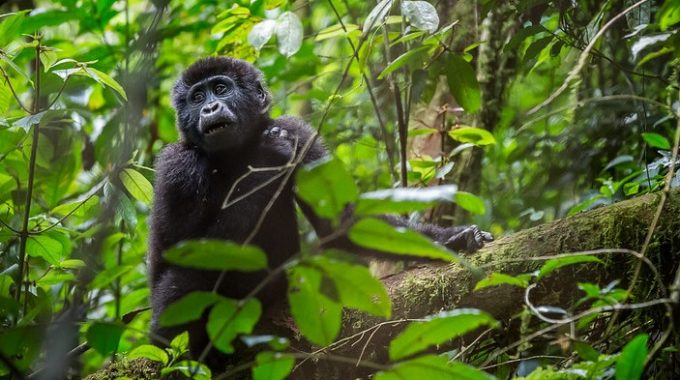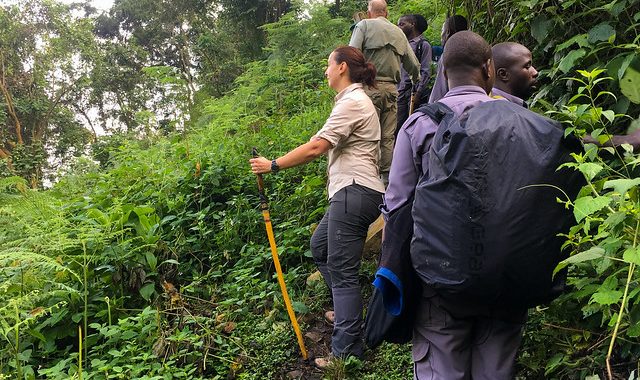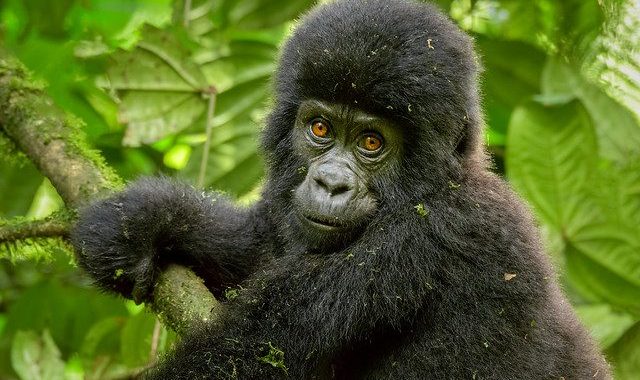Mountain Gorilla

ABOUT MOUNTAIN GORILLAS
The Mountain Gorilla – Physical description , Habitat and ecology , Behaviour , Conservation
Facts about mountain gorillas
Mountain gorillas are endangered giant primates that are remaining only on the African continent. Together with the Eastern lowland gorillas in Kahuzi Biega, mountain gorillas are sub-species of the eastern gorillas. Mountain gorillas share a 98% DNA with human beings and the primates are wonderful wildlife to encounter. There are about 1000 mountain gorillas remaining in the whole world and these are found around the extinct volcanoes on the borders of DRCongo, Rwanda and Uganda. Uganda houses about a half of the entire population in Bwindi Impenetrable National Park and Mgahinga national parks while the rest live in Rwanda’s Volcanoes national park and DRCongo’s Virunga national park. You can therefore visit Uganda, Rwanda and Congo for Mountain gorilla trekking.
The unique characteristics of mountain gorillas are seen in their;
Feeding
Mountain gorillas are mainly herbivore. They feed on vegetation containing; fruits, leaves, bedstraw, wild celery, stinging nettles and shoots. They sometimes eat small insects. Males eat much more compared to the amount eaten by females.
Physical appearance
They generally look violent. Mature mountain gorilla are giants. Mature males have strong muscles and the hair on the back is in a silver color hence their name silverback. Mountain gorillas have large heads with fur allover apart from the face, a thick trunk and a broad chest and a large stomach. Their arms are longer than the legs. Their nose has wrinkles known as nose prints.
Social life
Mountain gorillas live in groups also known as families of about 10-30 or even 40 members. Each group is led by a dominant silverback which determines the movement of their groups and protects them from any external threats. All members of a group have a close bond to each other. In case a group loses a female gorilla, orphans are taken care of by the silverback.
Habitat- Mountainous
Mountain gorillas live in forests on hilly areas. They live on the slopes of the Virunga Mountains. Therefore trekking for mountain gorillas involves hiking. These primates have more fur compared to other primates. This fur enables them to survive in their habitats which are characterized with low temperatures.
Reproduction
Female gorillas are ready to give birth at the age of around 10 years. After a gestation period of 8.5 months, they give birth to a single. Baby gorillas normally weigh about 1.8kg at birth. There are few cases of giving birth to twins. Maternal care takes quite a long time- an average of 5years caring for one baby. Female gorillas often give birth to 3 or 4 gorillas during their reproductive life. Reproduction in mountain gorillas is low and slow.
Mobility and flexibility
Mountain gorillas are known as very mobile primates. They roam around the forests and hills for different reasons. After a night in one location, they shift to a different area where they will make nests in the evening before they rest. They move around jumping on different branches, picking fruits, flowers and playing.
Prone to human diseases
Due to the 98% DNA that mountain gorillas share with human beings, they are prone to airborne infections that affect humans. Infections that are easily transferred to these primates are flu and cough and can claim their lives. This is the reason why anyone with a cold is prohibited from visiting the gorillas. Anyone who wants to cough when trekking must cover their mouth.
Regardless of how long or short the trek was, meeting and interacting with gorillas for one hour is one of the most exciting moments that you’ll have on the safari.



